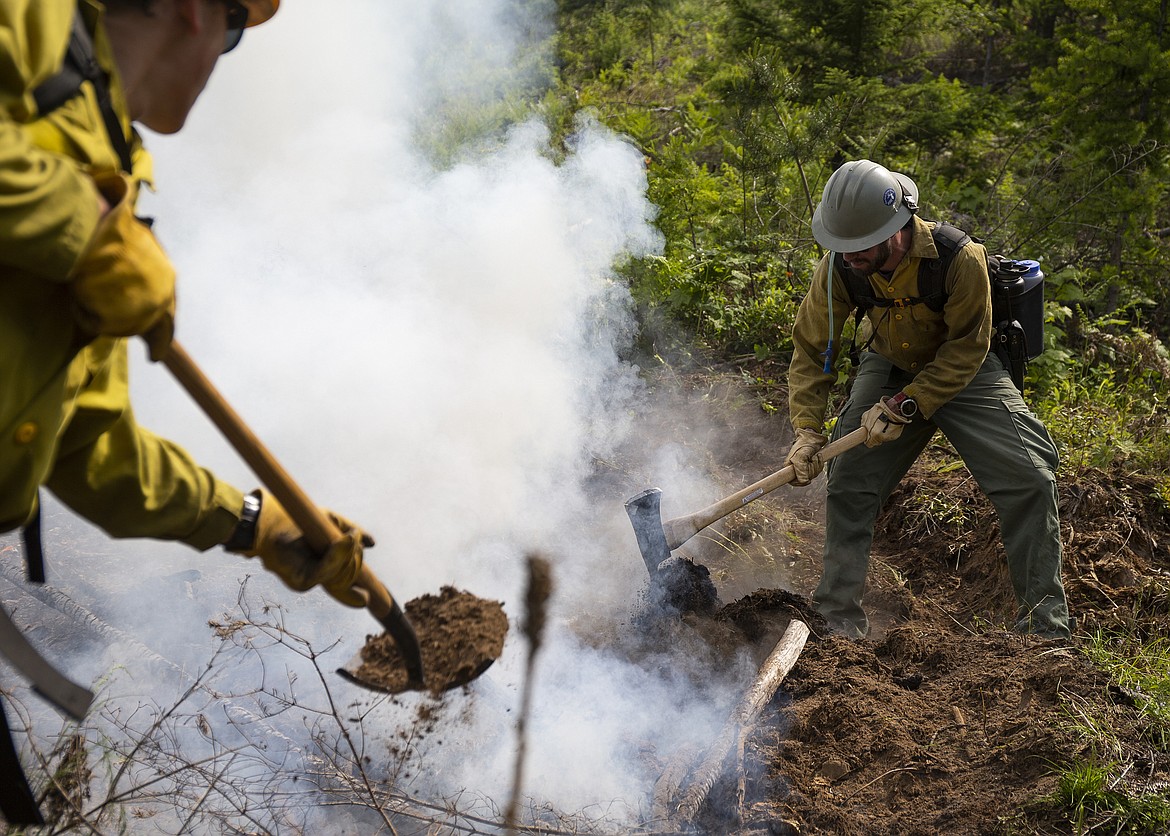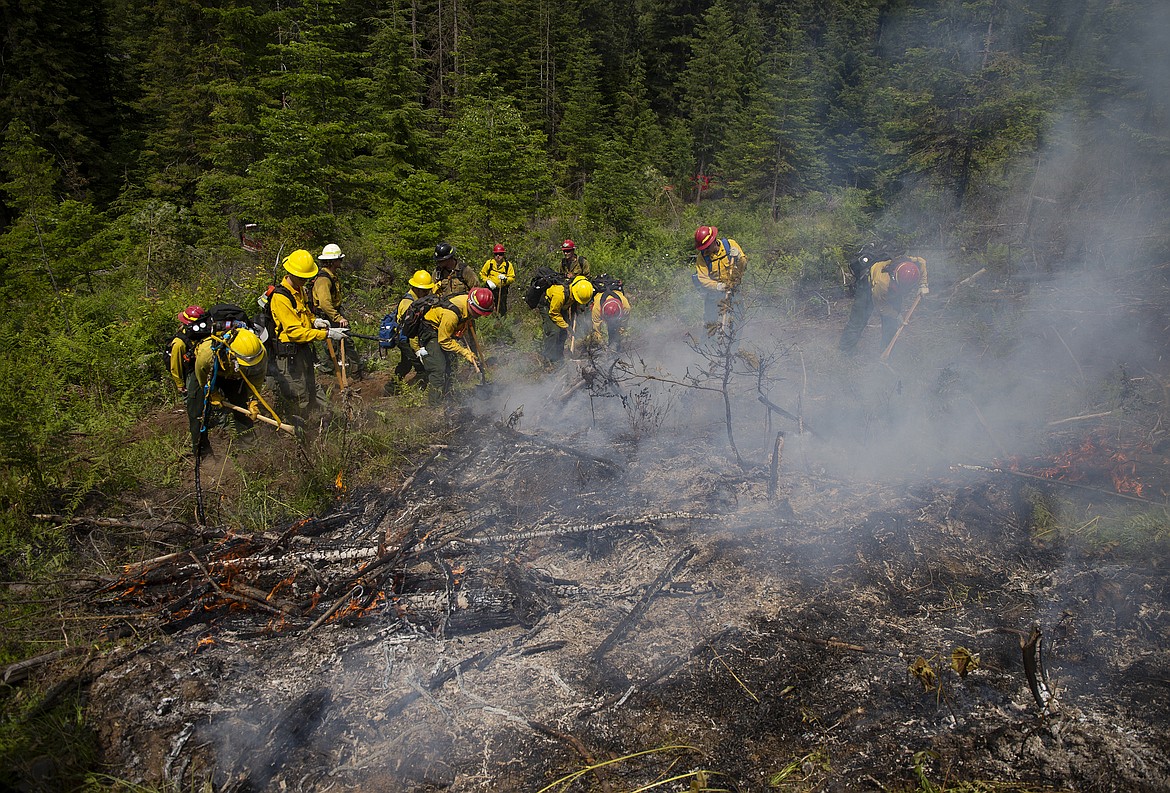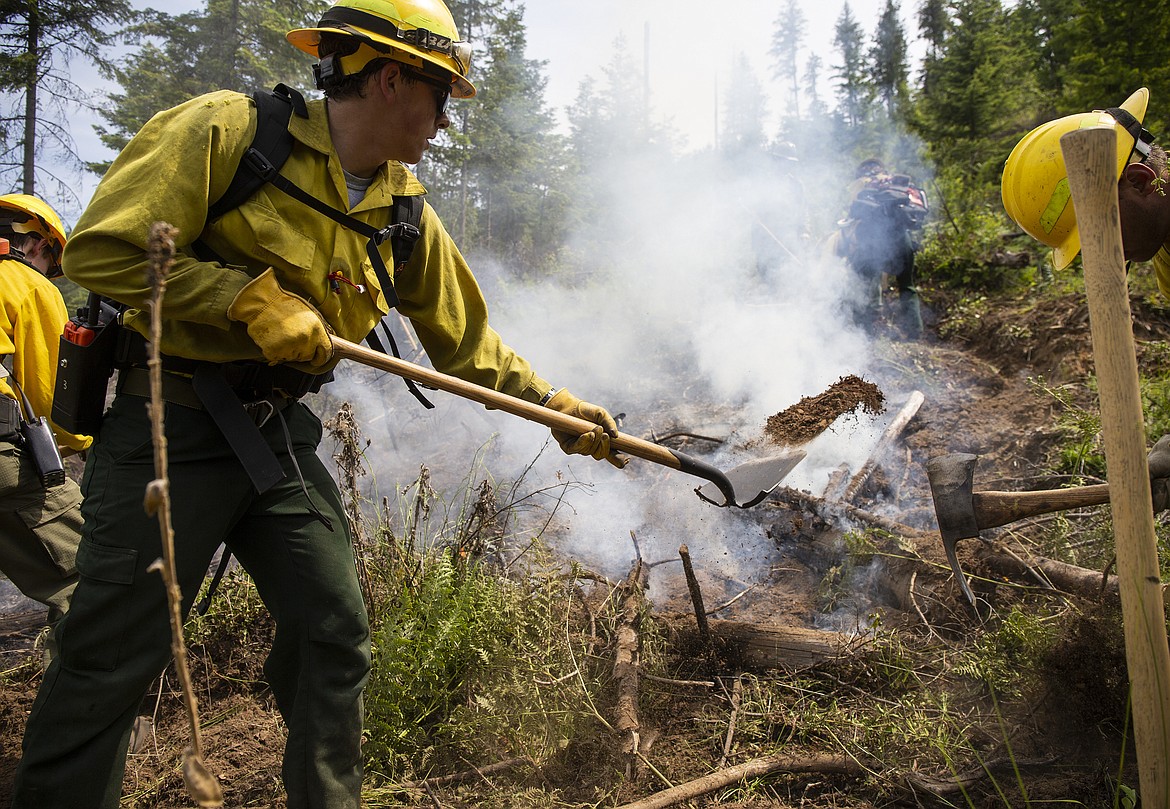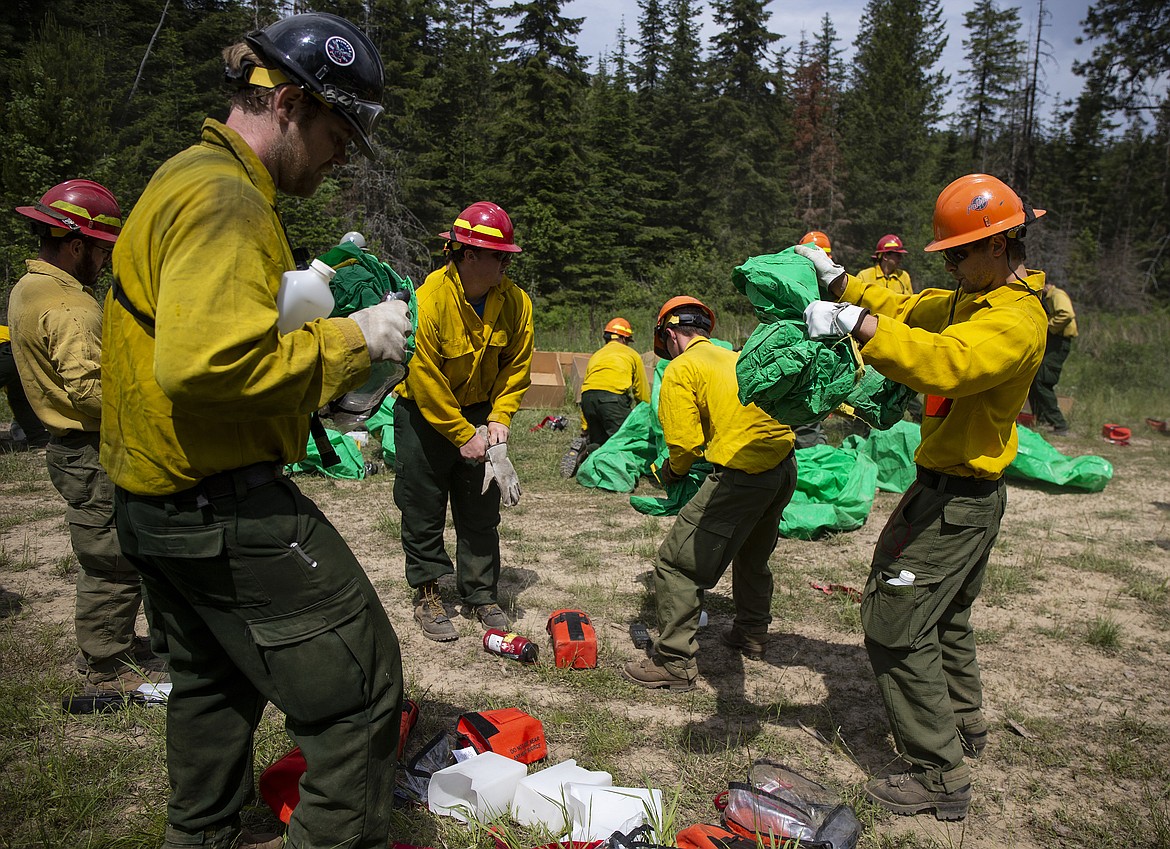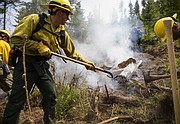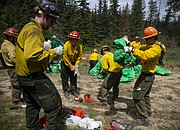Forged in fire
COEUR d’ALENE — First-year wildland firefighters this week got to whiff smoke, throw dirt and get blisters on their hands while hoisting wood-handled tools named for forebears of the fire line at a five-day school in Coeur d’Alene.
As part of the basic fire academy, more than 150 men and women prepared for a 2018 fire season that could blow up across the West, according to the National Interagency Fire Center in Boise.
Fire watchers like NIFC are expecting wildland fire potential to exceed the norm in the Northern Rockies, probably beginning later this summer.
“In August and September, this area of above normal potential will expand to include south central Montana,” according to NIFC.
For a few days this week, the would-be firefighters heard the forecasts as they sat tight in classrooms where they absorbed wildland firefighting techniques, learned how to use hand tools and got acquainted with equipment.
On Thursday they headed to the forest near Camp Lutherhaven along Lake Coeur d’Alene, donning block-heeled lace-up boots and Nomex clothing to put their new knowledge to first-hand use.
“The first three days are in the classroom,” Forest Service spokesperson Kary Maddox said. “Today is the culmination where they apply everything they have been taught.”
That meant carrying on their backs pumps that can suck water from streams. They laid hoses and cut fire line.
The men and women will be employed this summer at agencies including the Nez Perce and Coeur d’Alene tribes, the Bureau of Land Management, Idaho Department of Lands and the Forest Service from Riggins to Bonners Ferry.
Although most of Idaho isn’t included in a seasonal drought outlook, and seasonal precipitation so far hasn’t raised red flags; temperatures have been above normal this spring, and most of the high elevation snow in the Panhandle has melted — which could mean drier forests earlier than usual, according to the report.
“A lot of the snow at 6,000 feet is gone,” said Bob Tobin of the National Weather Service.
Once the snow is gone and precipitation greens up the forest, “it allows those fuels to come back good,” Tobin said. “Things start to dry out in July, and then all we need is starts.”
Tobin thinks the Panhandle fire season won’t start until the end of July and it will probably dissipate by mid September.
The new fire crews Thursday were tasked with putting out fires and cutting line with tools named for Ed Pulaski — a Forest Service ranger famous for saving the lives of 45 firefighters during the disastrous 1910 fire in North Idaho — and Malcolm McLeod, another ranger in the Sierras in the early 1900s who developed a shovel-like rake.
The cutting and digging tools named for the rangers are firefighting essentials.
“They are probably the favorite tools,” Maddox said.
The students built a fire line around a fire that measured 20 square feet, put it out and dug through the floor duff to ensure there were no hotspots, and they were taught to use the fire-retardent sacks used to weather a fire in the event they are caught in the flames.
“They deployed fire shelters in an entrapment scenario,” Maddox said. “They see what it’s like sitting in a burrito, waiting for the fire to clear … it’s a good exercise.”

